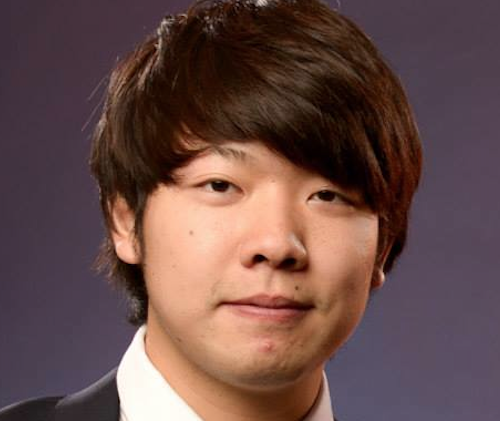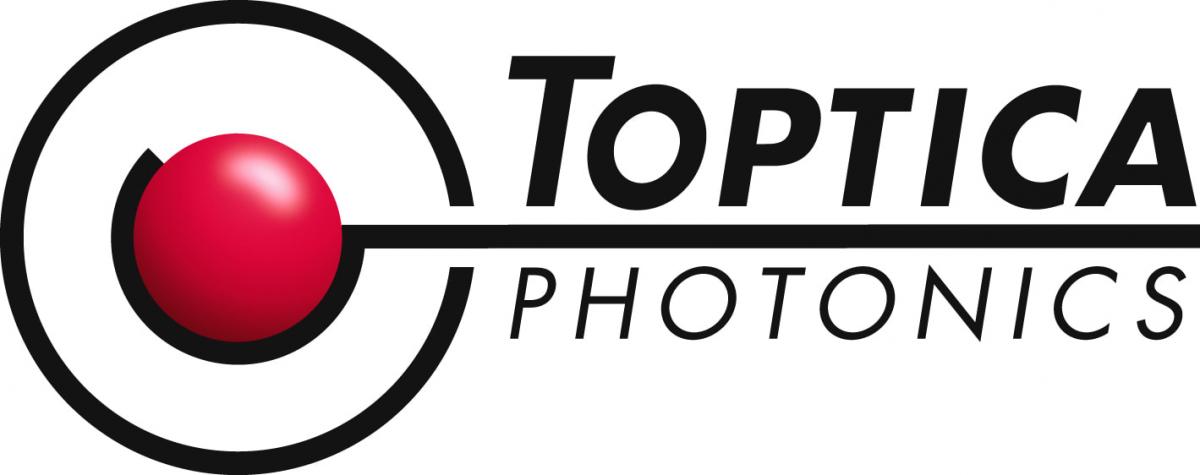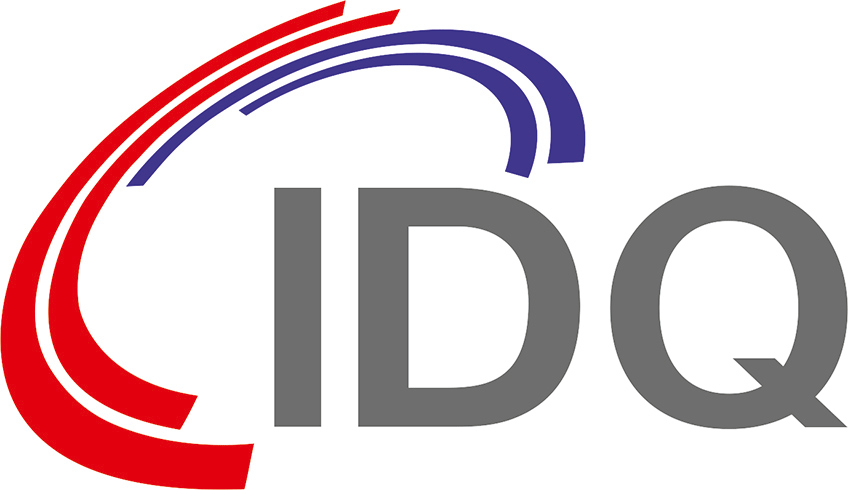Photonics for Quantum 2
- RIT/
- Future Photon Initiative/
- Workshops/
- Photonics for Quantum 2

Introduction
The Photonics for Quantum 2 Workshop (PfQ2) convenes international experts, industry, and students in quantum photonic information science and technology in support of efforts to fulfill the promise of the Quantum 2.0 Revolution.
The workshop features invited talks on quantum topics spanning applications, experiments, quantum photonic integrated circuits, materials, integration between dissimilar material systems, devices, and concepts to support a national quantum foundry. The meeting will develop priorities for new curriculum development and research on student learning that aligns with contemporary quantum topics. Also added to this year’s agenda is the Women in Quantum: Increasing Diversity in Industry and Academia Panel. This unique event will create a community among women in this area and increase the outreach efforts of future women researchers.
PfQ2 is free for attendees. The workshop is partially funded by a National Science Foundation grant that supports an RIT-led team to propose an NSF Quantum Leap Challenge Institute. It is also funded by RIT’s Future Photon Initiative and corporate sponsors.
Due to generous contributions from RIT and our sponsors, there is no registration fee.
For further information about this workshop, email Robyn Rosechandler (ritphotonics@rit.edu).
Learn more about the previous PfQ workshop, Phototonics for Quantum 1.
Program
All talks are at 1 pm (EDT), unless otherwise noted.
Links to previous talks are now available in the drop-down information for each talk.
June
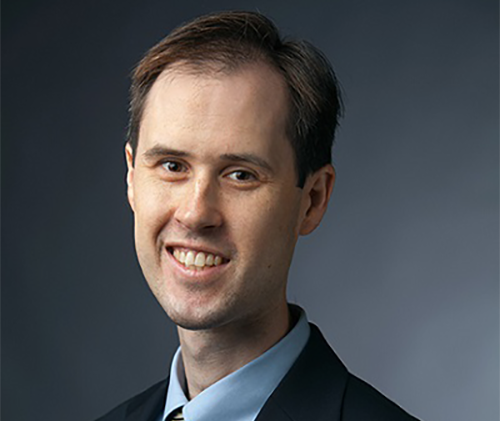
Abstract
I will describe our experiments to drive spin and orbital resonance of single diamond nitrogen-vacancy (NV) centers using the gigahertz-frequency strain oscillations produced within a diamond acoustic resonator. Strain-based coupling between a resonator and a defect center takes advantage of intrinsic and reproducible coupling mechanisms while maintaining compatibility with conventional magnetic and optical techniques, thus providing new functionality for quantum-enhanced sensing and quantum information processing. Using a spin-strain interaction at room temperature, we demonstrate coherent spin control and spin coherence protection. At cryogenic temperatures, we use orbital-strain interactions driven by a diamond acoustic resonator to study multi-phonon orbital resonance of a single NV center. Additionally, I’ll describe our efforts to enhance electron-phonon coupling by engineering mechanical resonators with small modal volumes based on a semi-confocal acoustic cavity.
Speaker Bio
Fuchs earned his Ph.D. in Applied Physics from Cornell University in 2007. Following a postdoctoral position at the University of California, Santa Barbara, he returned to the Cornell School of Applied and Engineering Physics in 2011. Half of Fuchs’s research group is focused on the interactions between spins, photons, and phonons in color centers for quantum information science. The other half is focused on nanomagnetism and spintronics. For this research, Fuchs pioneered the time-resolved magneto-thermal microscope to image spins and their dynamics in ferromagnetic or antiferromagnetic devices
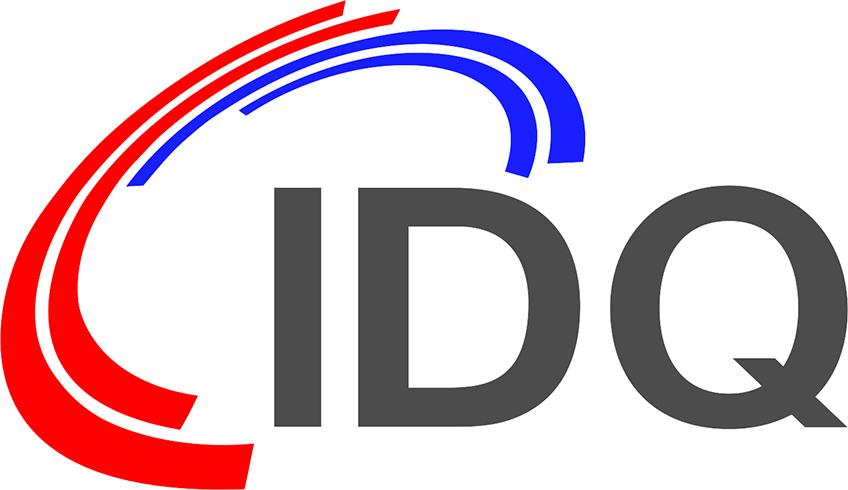
Abstract
ID Quantique provides photon counting solutions for the visible and near infrared regions of the optical spectrum, timing electronics and photonic sensing solutions for both industrial and research applications in various domains such as Quantum Physics, Quantum Communication, BioScience, Material Science, and Defense and Security. Rik will discuss IDQ’s latest developments in single photon detectors based on superconducting nanowires (SNSPD) and avalanche diodes (SPAD), and single photon electronics.
Website: https://www.idquantique.com/
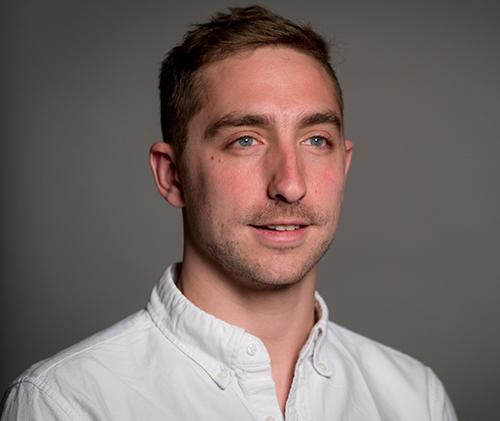
Abstract
The generation and manipulation of quantum states of light has historically played a critical role in the development of quantum information science: from the first violation of Bell’s inequality to the more recent development of near-term quantum algorithms such as the variational quantum eigensolver. In this talk, I present a new frontier for photons at the intersection of quantum mechanics and machine learning. I will first provide a short introduction to the field of quantum photonics, then demonstrate how quantum photonic processors can accelerate both quantum and classical machine learning. Finally, I show how optimization techniques can enhance large-scale quantum control and provide a new path towards efficient verification of near-term quantum processors.
Speaker Bio
Jacques Carolan received his MSci in Physics and Philosophy from the University of Bristol in 2011 where he then joined the Centre for Quantum Photonics to earn a PhD in 2015. He joined the Quantum Photonics Laboratory at MIT as a Postdoctoral Fellow in 2016 and after receiving a Marie Skłodowska-Curie Global Fellowship, joined the Quantum Photonics Group at the Niels Bohr Institute in 2019. He was a 2014 EPSRC ICT Pioneer, attended the 66th Lindau Nobel Laureates Meeting in 2016 on behalf of the Royal Society and won an Institute of Physics QEP thesis Commendation and UOB Faculty of Science Commendation for his thesis work.

Abstract
Quantum Design, Inc. (QD) is the manufacturing arm of Quantum Design International (QDI) and has been located in San Diego, California since its inception in 1982. QD is the leading commercial source for automated materials characterization systems incorporating superconducting technology. These systems offer a variety of measurement capabilities and are in widespread use in the fields of physics, chemistry, biotechnology, materials science and nanotechnology.
Quantum Designs Virtual Exhibit: https://qdusa.com/virtual_booth/2020_QD_RIT_Photonics.html

Abstract
Entanglement and encoding in discrete frequency bins – essentially a quantum analogue of wavelength-division multiplexing – represents a relatively new degree of freedom for quantum information with photons. In this talk I discuss biphoton frequency combs, generated either by spontaneous four-wave mixing (SFWM) from on-chip microring resonators or by spectral filtering of spontaneous parametric down conversion (SPDC) in second order nonlinear crystals. Potential advantages include generation of high dimensional units of quantum information (qudits), which can carry multiple qubits per photon, robust transmission over fiber, and frequency parallelism and routing. Since the initial experiments 2-3 years ago, frequency bin quantum photonics has been advancing rapidly [1, 2]. In this talk I will give special attention to high dimensional entanglement. One of the interesting possibilities is to perform mixing of multiple frequency bins in a single operation, going well beyond nearest neighbor “interactions.” In this vein I will comment on two recent experiments in our lab, each involving more than a dozen frequency bins. One experiment focuses on quantum walks of frequency entangled photon pairs, in which the input state can be coherently steered toward either correlated or anticorrelated quantum walk behavior [3]. In the second case, we show that high-dimensional frequency bin entanglement enables measurement of signal-idler delay at the few picosecond level, ~30× faster than the single photon detectors employed [4].
[1] M. Kues, C. Reimer, J. M. Lukens, W. J. Munro, A. M. Weiner, D. J. Moss and R. Morandotti, "Quantum optical microcombs," Nature Photonics, vol. 13, no. 3, pp. 170-179, 2019/03/01 2019.
[2] H.-H. Lu, A. M. Weiner, P. Lougovski and J. M. Lukens, "Quantum Information Processing With Frequency-Comb Qudits," IEEE Photonics Technology Letters, vol. 31, no. 23, pp. 1858-1861, 2019.
[3] P. Imany, N. B. Lingaraju, M. S. Alshaykh, D. E. Leaird and A. M. Weiner, "Probing quantum walks through coherent control of high-dimensionally entangled photons," arXiv preprint arXiv:1911.04369, 2019.
[4] S. Seshadri, P. Imany, N. B. Lingaraju, D. E. Leaird and A. M. Weiner, "Precision measurement of optical fiber delays with a quantum frequency comb (FM1C.5)," presented at the Conference on Lasers & Electro-Optics, 11-May-2020, 2020.
Speaker Bio
Andrew Weiner is the Scifres Family Distinguished Professor of Electrical and Computer Engineering at Purdue University. After Prof. Weiner earned his Sc.D. in electrical engineering in 1984 from the Massachusetts Institute of Technology, he joined Bellcore, at that time a premier telecommunications industry research organization, first as Member of Technical Staff and later as Manager of Ultrafast Optics and Optical Signal Processing Research. He joined Purdue as Professor in 1992, and has since graduated 43 Ph.D. students. Prof. Weiner’s research focuses on ultrafast optics, with an emphasis on processing of extremely high speed lightwave signals and ultrabroadband radio-frequency signals. He is especially well known for his pioneering work on programmable generation of arbitrary ultrashort pulse waveforms, which has found application both in fiber optic networks and in ultrafast optical science laboratories around the world. His recent research focuses on frequency comb generation from microresonators and manipulation of broadband entangled photons. Prof. Weiner is author of the textbook Ultrafast Optics, has published over 350 journal articles and 600 conference papers, and served a six year term as Editor-in-Chief of Optics Express. He is a member of the National Academy of Engineering and National Academy of Inventors, a past Department of Defense National Security Science and Engineering Faculty Fellow, and recipient of numerous awards, including the OSA Wood Prize, the IEEE Photonics Society Quantum Electronics Award, and Purdue University’s Herbert Newby McCoy Award for outstanding contributions to the natural sciences.
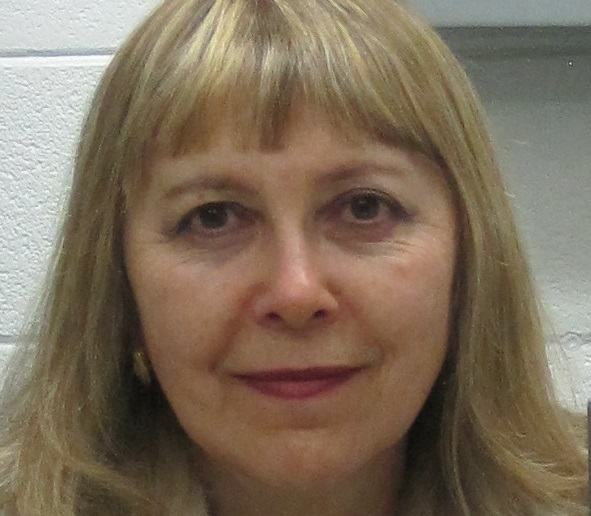
Abstract
From all types of plasmonic and photonics nanostructures developed for room-temperature single-photon source applications the highest Purcell factor with increasing emitter radiative decay rate and enhancement in the total fluorescence intensity were obtained with metal plasmonic patch (gap) nanoantennas. We report on sporadic appearance of ultrabright intensity spikes (up to ~400─900 kcounts/s) in time traces of photoluminescence from 100-nm silver nanocubes (widely used in patch plasmonic nanoantennas) under 532 or 633 nm laser excitation. Possible mechanisms of spikes are discussed.
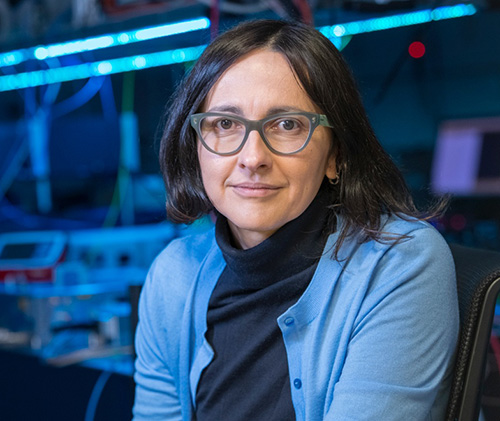
Abstract
At the core of most quantum technologies, including quantum networks, quantum computers and quantum simulators, is the development of homogeneous, long lived qubits with excellent optical interfaces, and the development of high efficiency and robust optical interconnects for such qubits. To achieve this goal, we have been studying color centers in diamond (SiV, SnV) and silicon carbide (VSi in 4H SiC), in combination with novel fabrication techniques, and relying on the powerful and fast photonics inverse design approach that we have developed. We illustrate this with a number of demonstrated quantum photonic devices and circuits in diamond and in SiC.
Speaker Bio
Jelena Vuckovic is a Jensen Huang Professor in Global Leadership in the School of Engineering, a Professor of Electrical Engineering and by courtesy of Applied Physics at Stanford, where she leads the Nanoscale and Quantum Photonics Lab. She is also a director of Q-FARM, Stanford-SLAC Quantum Science and Engineering Initiative, and is affiliated with Ginzton Lab, PULSE Institute, SIMES Institute, Stanford Photonics Research Center (SPRC), SystemX Alliance, and Bio-X at Stanford.
Upon receiving her PhD degree from the California Institute of Technology (Caltech) in 2002, she worked as a postdoctoral scholar at Stanford. In 2003, she joined the Stanford Electrical Engineering Faculty, first as an assistant professor (until 2008), then an associate professor (2008-2013), and finally as a professor of electrical engineering (since 2013). She has also held visiting positions at the Max Planck Institute for Quantum Optics (MPQ) in Munich, Germany (2019), at the Institute for Advanced Studies of the Technical University in Munich, Germany (2013-2018), and at the Institute for Physics of the Humboldt University in Berlin, Germany (2010-2013).
Vuckovic has received many awards including the James Gordon Memorial Speakership from the OSA (2020), the IET A. F. Harvey Engineering Research Prize (2019), Distinguished Scholar of the Max Planck Institute for Quantum Optics - MPQ (2019), Hans Fischer Senior Fellowship from the Institute for Advanced Studies in Munich (2013), Humboldt Prize (2010), Marko V. Jaric award for outstanding achievements in physics (2012), DARPA Young Faculty Award (2008), Chambers Faculty Scholarship at Stanford (2008), Presidential Early Career Award for Scientists and Engineers (PECASE in 2007), Office of Naval Research Young Investigator Award (2006), Okawa Foundation Research Grant (2006), and Frederic E. Terman Fellowship at Stanford (2003).
She is a Fellow of the American Physical Society (APS), of the Optical Society of America (OSA), and of the Institute of Electronics and Electrical Engineers (IEEE).
Vuckovic is a member of the scientific advisory board of the Max Planck Institute for Quantum Optics - MPQ (in Munich, Germany), of the Ferdinand Braun Institute (in Berlin, Germany), an advisory board member of the National Science Foundation (NSF) Engineering Directorate, and a board member of SystemX at Stanford. Currently, she is also an Associate Editor of ACS Photonics, and a member of the editorial advisory board of Nature Quantum Information and APL Photonics.
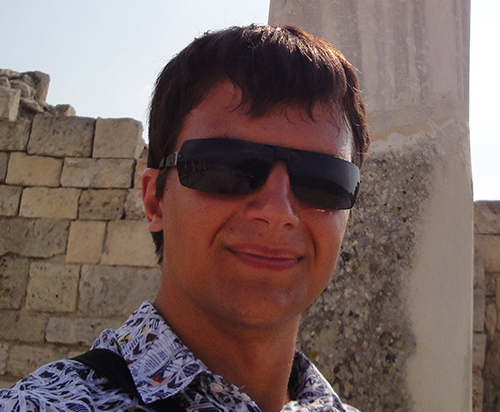
Abstract
We present an analytical calculation of plasmon excitation in a 2D conducting material by a thin horizontally arranged polarized cylindrical tip. This minimalistic model is used as a core for simulation of scattering type surface near-field microscopy (s-SNOM) of 2D materials. Due to its simplicity, it provides better understanding of s-SNOM operation and measurements it's able to perform.
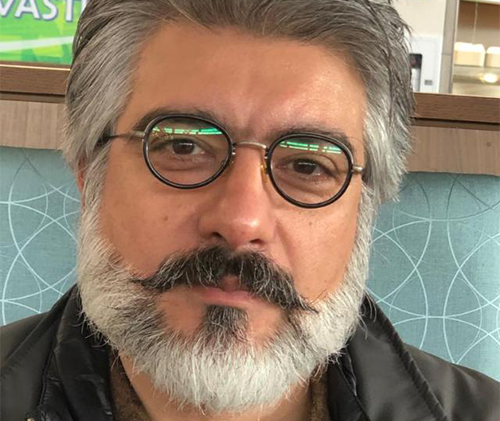
Abstract
Nonlinear optics, a research area that is emerged after the invention of laser in 1960, continues to be widely explored with a broad range of applications from optical communication and spectroscopy to quantum photonics. A long-standing goal is to realize nonlinear optical structures at progressively low optical power down to quantum regime and electrically-tunable, which is difficult given the small nonlinear coefficients of bulk materials. Currently, there arises a new type of 2D nonlinear optical materials with fascinating properties such as broadband saturable absorption and ultrafast carrier dynamics with a large nonlinear refractive index. Graphene with the ease of fabrication, compatibility with CMOS technology and silicon photonics is a strong contender for a new class of optoelectronic and photonic devices and circuits.
In this talk, I will first review graphene’s relevant physics for its application in nonlinear optics complemented by our theoretical work on the quantum treatment of its nonlinear Kerr coefficient. This includes how the Kerr coefficient can be electrically-tuned for device operation as well as new physics of anomalous optical saturation. I will then present our systematic experimental investigation of measuring Kerr coefficient through optical self modulation effect, with an emphasis on its wavelength dependence and temporal evolution via combined z-scan and pump-probe measurements. Finally, I will present our experimental work on ultrafast optical modulation/switching and bistability in a hybrid graphene-silicon photonic crystal nanocavities providing a world-record of modulation/switching speed and depth with the lowest optical power for an integrated nonlinear silicon-based photonic devices.
Speaker Bio
Hamed was born in Tehran, Iran and did his BSc. in Electrical Engineering (Major in Telecommunications) at K. N. Toosi University of Technology, Tehran, Iran. He received his MSc. in Electrical Engineering (Major in Electromagnetic Fields & Waves) from AmirKabir University of Technology with honors. In 1998, he joined the Department of Electrical & Computer (E&CE) at the University of Waterloo and obtained his PhD with distinction on December 2001. After his PhD, he spent 10 months as a postdoctoral fellow in Department of E&CE, focusing on superconducting single photon detectors and THz photonic devices and then moved to Institute for Quantum Computing (IQC) as a Research Assistant Professor where he established Integrated Quantum Optoelectronics Lab (IQOL). He becomes an Assistant Professor at Department of E&CE in 2005, and Department of Physics & Astronomy at University of Waterloo. He was promoted with tenure to the rank of Associate Professor in 2010 and to the rank of full professor in 2015. In 2012, he spent his sabbatical at Harvard School of Engineering and Applied Sciences. He offered graduate courses in Quantum Electronics & Photonics and Modern Optics in applied physics program and Applied Quantum Mechanics for Undergrad students at Harvard University. He has held a visiting associate professor position at Harvard University till end of 2013. He has been a faculty member at IQC from 2005 to 2014. He has been the primary guest editor in special issue of "Superconducting Quantum Electronics & Photonics" in IEEE Journal of Selected topics in Quantum Electronics for March/April 2015 issue. He is elected to be in the editorial board of Nature Scientific Report from 2015. In 2018, he has received an IDEX fellowship from Universite de Bordeaux in France and spend summer 2018 to conduct a research on graphene’s magnetophotonics at Bordeaux Institut d’Optique. He is an affiliate member of Perimeter Institute for Theoretical Physics (PI) and Waterloo Institute for Nanotechnology. He is a senior member of IEEE and APS.
July
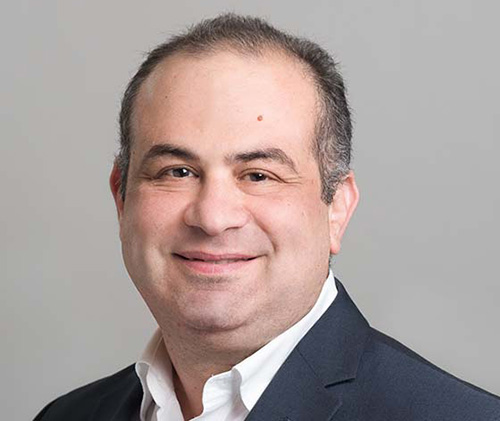
Abstract
This talk will describe a technology that enables the utilization of second order nonlinearities, Chi(2) in monolithic semiconductors to be used as an optimal tool box for quantum optics. This approach uses dispersion engineering in Bragg reflection waveguides to harness parametric processes to produce non classical sources through down conversion [1-4]. These can also be realized in conjunction with concomitant dispersion and birefringence engineering in active devices such as semiconductor diode lasers [5-9]. On the classical front, the technology enables novel coherent light sources using frequency conversion in a self pumped chip-form factor.
Novel sources for non-classical states of photons in this monolithic platform will be reviewed. These chip-based sources can afford the integration of other devices such as laser pump sources, power and polarization splitters, gates, cavities and much more. This platform essentially offers the capability of transferring current quantum optical setups from the optical table in a lab into a practical realm and even the market place.
Also in this talk, some of the application that utilize the aforementioned sources will be discussed, including monolithic photonics architectures that enable deterministic splitting of entangled states of light will be discussed. In addition, sources for target detection and sensing protocols such as quantum illumination in integrated architectures will be also presented. The attributes of this platform offer unique opportunities in metrology applications where size, power, form-factor and space qualification are important factors.
Speaker Bio
Amr is a Professor in the department of electrical and computer engineering at the University of Toronto. Prior to his academic career, he held a position at Agilent Technologies, R&D division, in the UK between 2000 and 2004. At Agilent his responsibilities included developing InP-based photonic semiconductor integrated circuits and high-powered submarine-class 980 nm pump lasers. He received his Ph.D. and M.Sc. from the University of Glasgow with a focus on photonic devices and fabrication technologies, in 1999 and 1995 respectively. He received his B.Sc. from Cairo University in 1993, in electronics and telecommunications engineering science.
His research interests include photonic device physics and characterization techniques, with emphasis on nonlinear optics in III-V semiconductors; applied optical spectroscopy in III-V optoelectronic devices and materials; III-V fabrication and monolithic integration techniques.
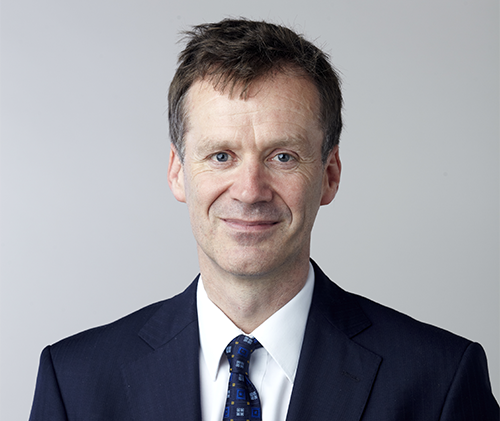
Abstract
We use entangled photons as the light source in a normal microscope. Using this quantum illumination improves both the resolution and noise rejection in the image.
The resolution of any classical imaging system is limited by the diffraction created by the finite size of the imaging lens. By using a light source that emits pairs of entangled photons and carefully controlling a camera that is capable of detecting single photons it is possible to observe these photons arriving two-by-two. Applying camera analysis software to log only these two-by-two events one can form an image from the mid-point (bisector) of each of these pair events. The image formed from the sum of all these bisectors has an improved resolution that surpasses the classical limit.
Another advantage of using a quantum illumination is that it allows the two-by-two events from entangled photon pairs to be distinguished from background (classical) light and sensor noise. When processed in this way the resulting image is free of camera noise and any background light may be eliminated. The use of a quantum illumination protocol such as that used here results in the elimination of background light and therefore allows the development of the optical equivalent of quantum radar – a quantum enhanced LIDAR scheme.
Using quantum illumination, combined with commercially available cameras that are sensitive to single photons creates a new approach to super-resolution and low noise microscopy.
Imaging through noise with quantum illumination, T Gregory, P-A Moreau, E Toninelli, and M J Padgett, Science Advances 6, eaay2652 (2020)
Resolution-enhanced quantum imaging by centroid estimation of biphotons, E Toninelli, P-A Moreau, T Gregory, A Mihalyi, M Edgar, N Radwell, and M J Padgett, Optica 6, 347-353 (2019)
Speaker Bio
Miles Padgett holds the Kelvin Chair of Natural Philosophy in the School of Physics and Astronomy at the University of Glasgow. He heads an Optics Research Group covering a wide spectrum from blue-sky research to applied commercial development, funded by a combination of government charity and industry.
Miles is a Fellow both of the Royal Society of Edinburgh and the Royal Society, the UK's national academy. In 2008 Miles was awarded the UK Institute of Physics, Optics and Photonics Division Prize. In 2009 Miles was awarded the Institute of Physics, Young Medal "for pioneering work on optical angular momentum". In 2014 he was awarded the Kelvin Medal of the Royal Society of Edinburgh for his contributions to optics and his promotion of a global community of researchers. In 2015 he was awarded the Prize for Research into the Science of Light by the European Physical Society, in 2017 the Max Born Award of the OSA and in 2019 the Rumford Medal of the Royal Society. In 2019 he was named by Web of Science as one of the eight, globally highly-cited physics researchers in the UK.
His research group studies in the field of optics and in particular of optical angular momentum. Their contributions include an optical spanner for spinning micron-sized cells, use of orbital angular momentum to increase the data capacity of communication systems and an angular form of the quantum Einstein-Podolsky-Rosen (EPR) paradox.
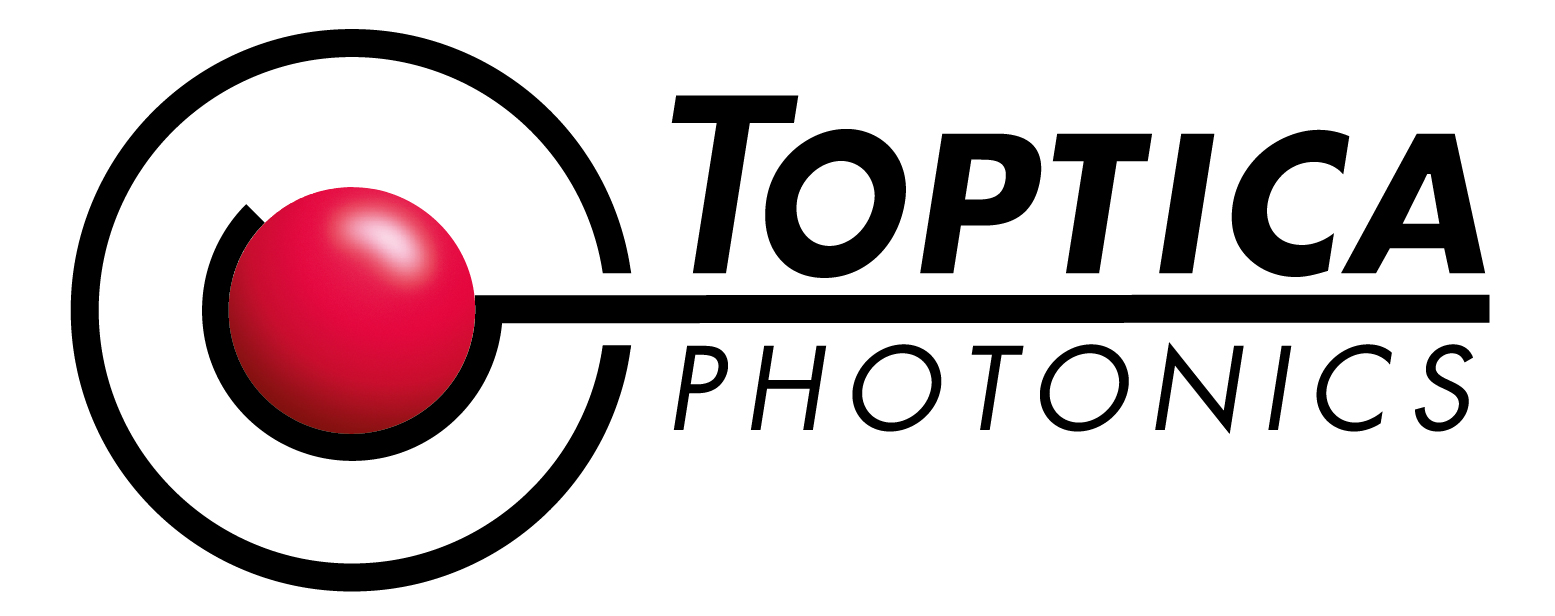
Abstract
TOPTICA is the world leader in diode laser and ultrafast technology for industrial and scientific markets. We offer the widest range of single mode tunable light in the 190 – 4000nm and 0.1 – 6 THz spectral region with various accessories to measure, characterize, stabilize and analyze light. TOPTICA's products are widely and successfully used for research and applications in quantum physics, quantum optics, atom optics, photonics and related fields. Whenever a laser is required – pulsed or cw, tunable or actively frequency stabilized – a frequency comb or even a complete solution combining many lasers and photonicals, TOPTICA is the ideal partner.
Website: http://www.toptica.com/

Abstract
Building a quantum computer is not only about having qubits or quantum processors, analogously to classical computers are not only based on transistors or integrated circuits. Accordingly, in the very recent times, a few unique research groups in academia and companies have been exploring and proposing high-level and low-level programming languages, compilers, microarchitecture and instruction set architectures for quantum computation as well as different computer architecture approaches. In other words, developing a quantum computer requires bridging quantum applications and quantum devices. This talk will address the main challenges of building a scalable full-stack quantum computing system followed by a discussion on its architecture focusing on fault tolerance and compilation of quantum algorithms on NISQ devices. I will also provide my vision on how the research community could accelerate the process towards building such a scalable quantum machine, potentially through vertical cross-layer co-design structured methodologies.
Speaker Bio
Dr. Carmen G. Almudever holds a BSc and a MsC in Telecommunication Engineering from Miguel Hernandez University of Elche, Spain and a PhD in Electronic Engineering from Polytechnic University of Catalonia, Spain. During her PhD she was working on beyond CMOS technologies such as carbon nanotubes and memristive devices as well as on novel reconfigurable architectures and dynamic computing systems. In 2102 she received a fellowship from Intel (Doctoral Student Honor Programme). In 2014, she joined Delft University of Technology for working on quantum computing and she is currently involved in the architectural and system design research with a particular emphasis on fault tolerant routing of quantum states and the corresponding quantum communication infrastructure. She has published over 20 technical publications in nanotechnology and microelectronics journals and circuits and systems conferences. Her main research interests include quantum computing, quantum computer architecture, and mapping of fault-tolerant quantum circuits.
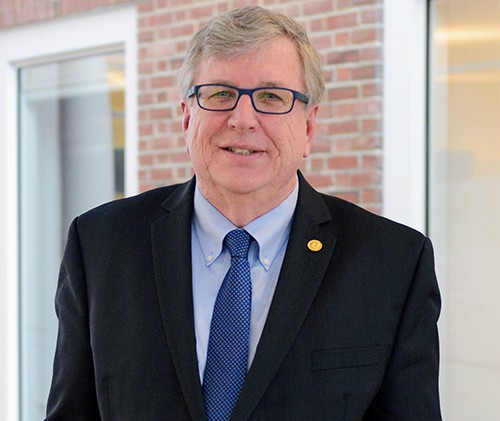
Abstract
The Quanta Image Sensor (QIS) is a photon-counting image sensor conceptualized in 2004 by Fossum and reduced to practice over the past 8 years at Dartmouth using a CMOS image sensor platform, and now referred to as CIS-QIS. This CIS-QIS device is a photon-number resolving sensor that does not use avalanche multiplication, and has been demonstrated in megapixel format with small pixel pitch. This progress will be reported along with associated progress of the spin-out company Gigajot, and other collaborators. In just the past few years, SPAD devices have also been used to explore the QIS concept. Termed SPAD-QIS, the first megapixel SPAD-QIS was reported just in the past few weeks. A comparison of the advantages of CIS-QIS and SPAD-QIS will be presented. Both represent a paradigm shift in image acquisition and may become important for many quantum photonics applications.
Speaker Bio
Professor Fossum, a Queen Elizabeth Prize Laureate, is one of the world's experts in solid-state image sensors. He invented the CMOS active pixel image sensor used in almost all cell-phone cameras, webcams, many digital-still cameras and in medical imaging, among other applications. He worked at the NASA Jet Propulsion Laboratory and was CEO of two successful high tech companies and is a serial entrepreneur, recently co-founding a new startup with two former PhD students, Gigajot. See his personal webpage for more information. His interests at Dartmouth are teaching and researching the next generation of solid-state image sensors for photon-counting and gigapixel cameras. He also directs Dartmouth’s PhD Innovation Programs and serves as Dartmouth’s Associate Provost for Entrepreneurship and Technology Transfer.
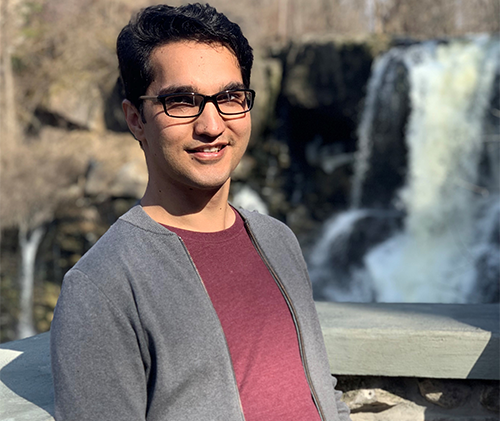
Abstract
We investigate the temperature dependence of valley polarization in WS2 heterostructures. WS2 layer is considered as an optically active material. The influence of heterostructures of different materials on the degree of valley polarization is depicted. The results indicate that unlike interaction in WS2 encapsulated with hBN, the interaction between WS2 and graphene has an intense impact on the temperature dependence depolarization. Furthermore, intervalley scattering rates under resonant and non-resonant excitation energy as the crucial parameters to see the temperature dependence by considering Fröhlich coupling are calculated. The results show the scattering rate is almost independent of temperature due to large phonon energy. Subsequently, the major contribution of observed valley depolarization should come from the change in the radiative lifetime.

Abstract
Hamamatsu Corporation is the North American subsidiary of Hamamatsu Photonics K.K. (Japan), a leading manufacturer of state-of-the-art devices for the generation and measurement of infrared, visible, and ultraviolet light, as well as xrays. These devices include silicon photomultipliers, photomultiplier tubes, photodiodes, infrared detectors, image sensors, spectrometers, spatial light modulators, cameras, and scientific light sources. This summer we are hosting a series of webinars about these devices, and those interested in attending can register at our website, www.hamamatsu.com
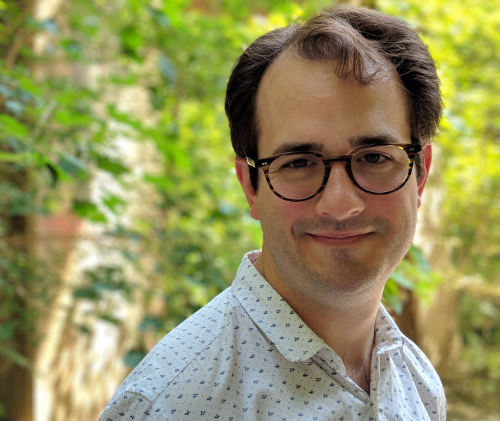
Abstract
Xanadu is a full-stack quantum computing company located in Toronto, Canada. Focussing on implementations of continuous variable integrated photonics, Xanadu is dedicated to developing and providing access to practical quantum devices integrated with its quantum optics simulator Strawberry Fields and machine learning platform PennyLane. In the past decade weakly driven parametric fluorescence, typically using spontaneous four-wave mixing orparametric downconversion, has emerged as the workhorse by which nonclassical light is generated on chipbased nanophotonic platforms. Even more recently, these methods have been used to generate single mode squeezed vacuum states. Together with programmable interferometers and photon-number resolving detection,this technology provides a route to near-term quantum computation. I will begin by giving an introduction to Xanadu, including its motivations and goals. The bulk of my talk will detail Xanadu's progress towards a photonic quantum processor that is available on the cloud.
Speaker Bio
Dylan holds a PhD in Physics from the University of Toronto. His expertise includes quantum state and process characterisation, adaptivity, and weak measurements, as well as quantum integrated photonics and non-classical state generation.
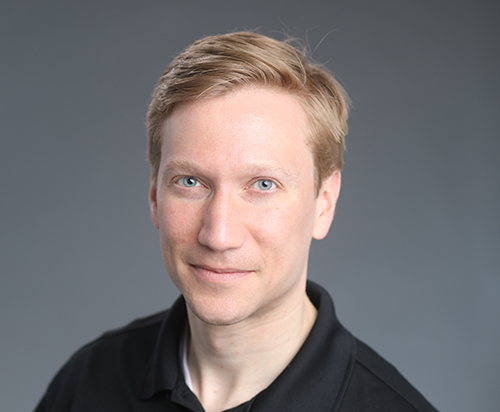
Abstract
Due to their compatibility to existing telecom technology, continuous variable (CV) weak coherent state protocols are promising candidates for a broad deployment of quantum key distribution (QKD) technology. We demonstrate how an existing simulation framework for modelling classical optical systems can be utilized for simulations of weak-coherent CV-QKD links. Having complemented the physical simulation layer by the post-processing layer (reconciliation and privacy amplification), we are able to estimate secure key rates from simulations, greatly boosting the development speed of practical CV-QKD schemes and implementations.
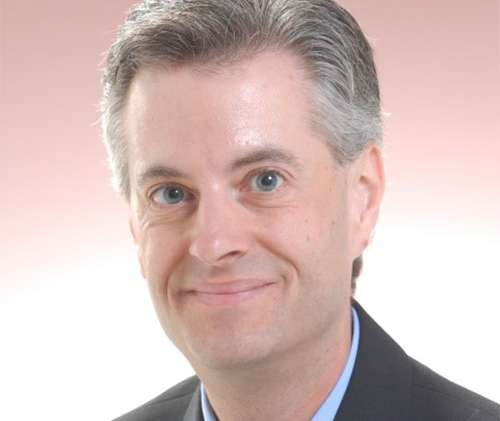
Abstract
III-V compound semiconductor nanowires (NWs) are being developed for the next generation of optoelectronic devices such as photodetectors, photovoltaics, betavoltaics and thermoelectrics. The self-assisted vapor-liquid-solid method is now a well-established technique for the growth of III-V NWs on silicon substrates. In this method, an array of holes in a SiO2 film is used for metal droplet formation, which seeds the growth of vertically oriented NWs within a periodic array. The free lateral surfaces of NWs allow elastic relaxation of lattice misfit strain without the generation of dislocations, permitting unique heterostructures and the direct integration of III-V materials on silicon substrates. Furthermore, NWs permit high optical absorption due to an optical antenna effect. The optical absorption in NW arrays can exceed that due to a thin film of equivalent thickness, enabling high efficiency NW-based photonic devices. Furthermore, optical resonances that depend on the NW diameter allow multispectral absorption. Some of the challenges associated with NW materials and devices, including quantum dot formation, will be illustrated.
Speaker Bio
Ray LaPierre obtained a Ph.D. degree in 1997 in the Engineering Physics Department at McMaster University (Hamilton, Ontario, Canada) where he developed molecular beam epitaxy of compound semiconductor alloys for laser diodes in telecom applications. Upon completion of his graduate work, he joined JDS Uniphase (Ottawa, Ontario, Canada) where he developed dielectric coatings for wavelength division multiplexing devices. In 2004, he rejoined McMaster University as an Assistant Professor in the Engineering Physics Department. He is currently Professor and Chair with interests in III-V nanowires, molecular beam epitaxy, and applications in photovoltaics, photodetectors, betavoltaics, thermoelectrics and quantum information processing. He has over 119 lifetime publications, 57 invited presentations and 179 contributed conference presentations. He is also Editor-in-Chief of the journal Nanotechnology.
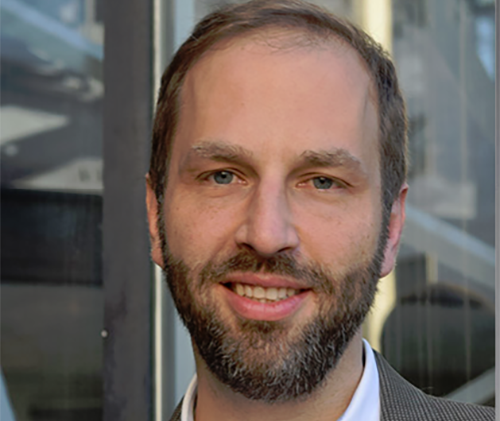
Abstract
Superconducting nanowire single-photon detectors (SNSPDs) have distinguished themselves as a near-optimal choice for a range of quantum information applications, including integrated photonics and quantum key distribution. But the most recent demands from the quantum domain are stretching their capabilities. In particular, photon number resolution has not been readily available in high-performance variants of the devices, and superconducting nanowires were generally thought not to be capable of intrinsic photon number resolution. Recently, significant results in this area have shown that photon number resolution is quite practical with SNSPDs. In addition, wider nanowires have shown good performance, suggesting that the devices can be fabricated using standard photolithography equipment. In this talk, I will review the SNSPD technology, as well as discuss our latest results.
Speaker Bio
Prof. Berggren is a Professor of Electrical Engineering at Massachusetts Institute of Technology, Department of Electrical Engineering and Computer Science, where he heads the Quantum Nanostructures and Nanofabrication Group. He is also Director of the Nanostructures Laboratory in the Research Laboratory of Electronics and is a core faculty member in the Microsystems Technology Laboratory (MTL). From December of 1996 to September of 2003, Prof. Berggren served as a staff member at MIT Lincoln Laboratory in Lexington, Massachusetts, and from 2010 to 2011, was on sabbatical at the Technical University of Delft.
His current research focuses on methods of nanofabrication, especially applied to superconductive quantum circuits, photodetectors, high-speed superconductive electronics, and energy systems. His thesis work focused on nanolithographic methods using neutral atoms.
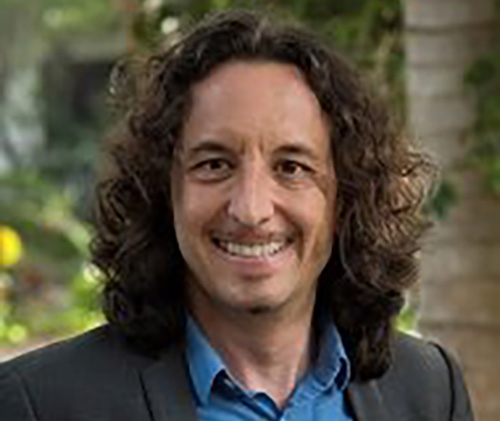
Abstract
One of the biggest challenges to a viable quantum computer with real-world impact is scaling it up to handle large computations. Continuous-variable (CV) cluster states, which are resource states for measurement-based quantum computation, can be made on a vast scale with minimal experimental resources. I will present recent experimental breakthroughs in producing large-scale CV cluster states, and I will illustrate how to use these states for fault-tolerant quantum computation.
Speaker Bio
Nicolas Menicucci is an Associate Professor in the School of Science at RMIT University. After completing his PhD in 2008 under joint supervision of Prof Shivaji Sondhi at Princeton University and Profs Michael Nielsen and Gerard Milburn at The University of Queensland, A. Prof Menicucci secured independent research fellowships in Canada and Australia. From 2008–2011, he worked as a Postdoctoral Fellow at Perimeter Institute for Theoretical Physics in Waterloo, Ontario. In 2011, he joined the University of Sydney, initially as a University Postdoctoral Fellow and then as a DECRA Research Fellow funded by the Australian Research Council. He joined RMIT as a Vice-Chancellor’s Senior Research Fellow in 2015 and was promoted to Associate Professor in 2019.
Menicucci ’s research expertise includes theoretical quantum computation, quantum optics, and relativistic quantum information. His interests include both quantum technology and fundamental physics. He has published more than 35 papers on these topics and is now recognized as a pioneer and leader in the development of continuous-variable (CV) cluster states as a platform for optical quantum computing. Several breakthrough experiments in this area, including a demonstration by CQC2T collaborators of a 1-million-mode CV cluster state, have demonstrated the potential of these resource states to be made on an immense scale. Such scalability is a key requirement for any quantum computing platform. Menicucci has also contributed key results at the interface of quantum information and relativity, and he currently serves a Council Member of the International Society of Relativistic Quantum Information.
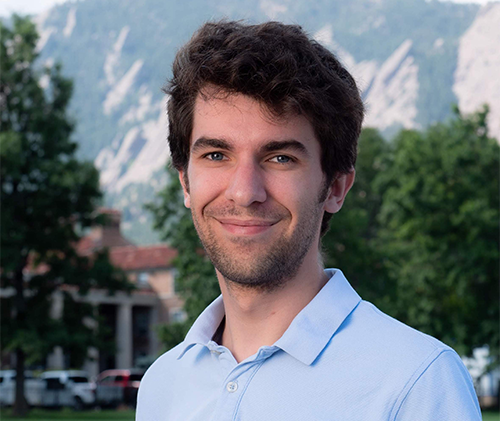
Abstract
Quantum sensing, quantum networking and communication, and quantum computing have attracted significant attention recently, as these quantum technologies could offer significant advantages over existing technologies. In order to accelerate the commercialization of these quantum technologies, the workforce must be equipped with the necessary skills. We present the results of a qualitative study of the quantum industry, where we conducted a series of interviews with 21 U.S. companies in the quantum industry. The aim of these interviews was to profile the types of jobs that exist and describe the variety of skills valued across the quantum industry. This has allowed us to identify the current routes into the quantum industry, providing a picture of the current role of higher education in training the quantum workforce. Additionally, we enquired about the training and hiring challenges the quantum industry is facing and how higher education may optimize the important role it is currently playing.
Speaker Bio
Michael is a post-doctoral researcher in the Lewandowski group working on the Quantum Education and Workforce initiative. This work is looking at how university education is meeting the current needs of the "Quantum Industry" in terms of student knowledge and skills, and what developments might be necessary to meet future needs.
Michael completed his undergraduate Master of Physics at the University of Oxford, where he stayed for a PhD in Theoretical Plasma Physics, which he completed in 2017. Since then, he has qualified as a teacher whilst working at a secondary school in London, teaching children from ages 11-18.
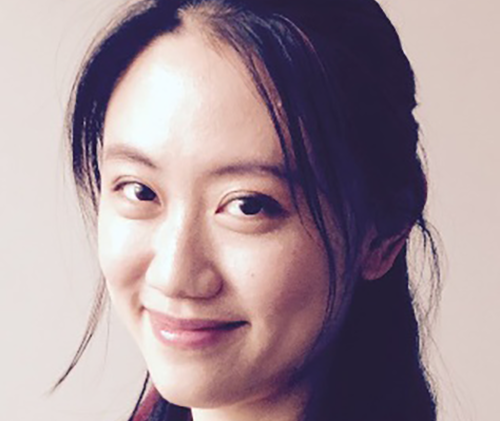
Abstract
The discrete electronic energy levels in atoms and the ability to probe and control them using their interactions with electromagnetic fields have enabled a host of applications in quantum sensing and metrology, including atom-based time and frequency standards, magnetometers, and inertial sensors. Precision measurements with atoms rely on the capability to control the frequency, phase, polarization, and direction of photons used to prepare and measure quantum systems, and thus developments in near-infrared optics and photonics are critical to advancing state-of-the-art atomic sensors. In this talk, I will summarize the basic principles of atom-based quantum sensing and highlight the role of atom-photon interactions in quantum measurements. The benefits and challenges of realizing atom-based quantum sensors will be illustrated through examples from my prior research, including the development of sensitive accelerometers and gyroscopes based on cold-atom interferometers. I will discuss the critical developments in photonic engineering that are still needed to improve the performance and functionality of atom-based-quantum sensors and our research progress at UW-Madison towards addressing these needs.
Speaker Bio
Jennifer Choy is an Assistant Professor at the Department of Engineering Physics at the University of Wisconsin–Madison since January 2019. Prior to joining UW-Madison, she was a Principal Member of Technical Staff at Draper Laboratory, where she led developments of atomic and optical inertial sensors. Jen’s research interests include quantum sensing, experimental atomic and optical physics, and nanophotonics. She received S.B. degrees in Physics and Nuclear Engineering from the Massachusetts Institute of Technology, and a Ph.D. in Applied Physics from Harvard University.
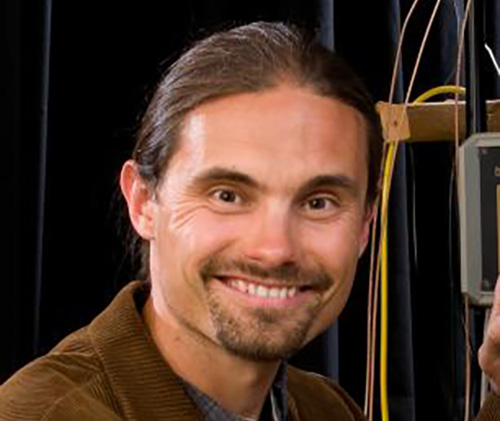
Abstract
This presentation will describe Canada’s silicon photonics rapid prototyping consortium, SiEPICfab, and how it can accelerate silicon photonics research and development in quantum information processing. We use electron beam lithography (EBL) to fabricate either individual chips or wafers ranging from 100 mm to 200 mm in size. Fabrication includes waveguides, high-efficiency thermo-optic phase shifters, silicon doping for modulators/heaters/defect-mediated detectors, Bragg grating filters, and NEMS-tunable photonic crystals. Rapid prototyping also allows us to fabricate advanced devices not available in foundries, such as single photon detectors. Finally, successful demonstration of silicon photonic circuits requires testing and packaging - both electrical and optical - and we describe our plans for photonic wire bonding of silicon photonic chips to optical fibres and III-V chips.
Speaker Bio
Lukas Chrostowski is a Professor of Electrical and Computer Engineering at the University of British Columbia, Vancouver, BC, Canada. He earned the B.Eng. in electrical engineering from McGill University in 1998 and a PhD from the University of California at Berkeley in 2004. Chrostowski received the Killam Teaching Prize at the University of British Columbia in 2014. He co-authored the book Silicon Photonics Design (Cambridge University Press, 2015). He is the Program Director of the NSERC CREATE Silicon Electronic-Photonic Integrated Circuits (Si-EPIC) training program in Canada, and has been teaching silicon photonics workshops and courses since 2008.
Dr. Chrostowski's research interests are in optoelectronics, nano-photonics with an emphasis on silicon photonic integrated circuits (PICs). He is also interested in the design, modeling, and nanofabrication of lasers, primarily Vertical Cavity Surface Emitting Lasers (VCSELs), for applications in high-speed optical communications, optical interconnects and biophotonics.

Abstract
Photonics is the technology of generating and harnessing light and other forms of radiant energy whose quantum unit is the photon. Applications for light-based technologies are growing every day and can be found nearly everywhere – from cell phone displays and cameras to lighting and cars that park themselves. Photonics utilizes lasers, optics, imaging and more to impact every area of modern life, from communications and information processing to lighting, agriculture and medicine, manufacturing, transportation, aerospace and much more.
Photonics Media publishes print and digital business-to-business magazines, buyers’ guides, websites and e-newsletters for individuals working with light-based technologies in the photonics industry. A pioneering publisher in the discipline of photonics, Photonics Media has built a large global audience comprising academics and researchers, manufacturers and end-users.
For the latest news and information about quantum photonics, visit their website: https://www.photonics.com/Splash.aspx?Tag=quantum&Type=ART
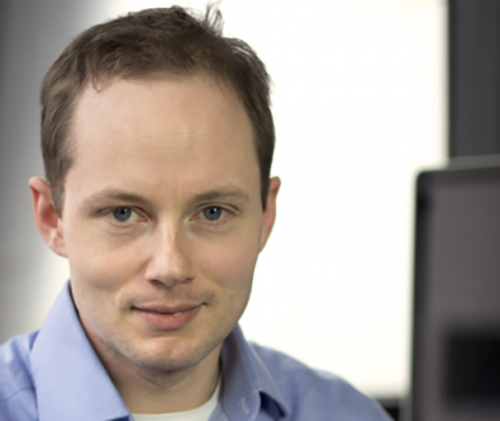
Abstract
Recent advances in materials, control, and nanofabrication now open the prospect for scalable quantum technologies based on solid-state quantum systems. In particular, photonic integrated circuits (PICs) now allow routing photons with high precision and low loss, and solid-state artificial atoms provide high-quality spin-photon interfaces. The first part of this talk will review progress towards quantum memory-integrated PICs for quantum networks and modular quantum computers. The second part of the talk will consider new directions for processing classical and quantum information in deep learning neural networks architectures.

Figure: A programmable photonic integrated circuit (center) for machine learning acceleration (left) or quantum repeater networks (right).
Speaker Bio
Dirk Englund received his BS in Physics from Caltech in 2002. After a Fulbright fellowship at T.U. Eindhoven, he completed an MS in Electrical Engineering and a PhD in Applied Physics at Stanford University in 2008. After a postdoctoral fellowship at Harvard University, he joined Columbia University as Assistant Professor of E.E. and of Applied Physics. He joined the MIT EECS faculty in 2013. Recent recognitions include the 2011 PECASE, the 2011 Sloan Fellowship in Physics, the 2012 DARPA Young Faculty Award, the 2017 ACS Photonics Young Investigator Award, and the OSA's 2017 Adolph Lomb Medal, and a Bose Research Fellowship in 2018.
Visit the MIT Quantum Photonics Laboratory: qplab.mit.edu. Our collaborative Projects (MIT, Harvard, Sandia National Laboratory, MITRE Corp, MIT Lincoln Laboratory) have opportunities for outstanding theorists and experimentalists!
- Spin-Photon Quantum Networks
- Large-Scale Photonics
- Large-Scale Photonics for Cold-Atom Quantum Computing
- Highly selective positions for PhD students, postdocs, scientists.

Abstract
Babak Saif (NASA), Carl Williams (NIST), and Dominique Dagenais (NSF) and moderator, Don Figer, will discuss the status of quantum research programs in their government agencies and plans over the next year.
Speaker Bio
Babak Nassar Saif, Senior Optical Physicist, NASA:
Dr. Babak Saif received a B.S. in Electrical Engineering and the M.S. and PhD. Degrees in Physics from the Catholic University of America, and also M.S. and PhD. Degrees in Optics from the University of Arizona. His PhD specialties were in the electrical properties of DNA molecules and speckle interferometry. He has served as the Optical Branch Head when employed by Swales Aerospace. Subsequently, he was a scientist at the Space Telescope Science Institute and is presently a Senior Optical Physicist with Godard’s Instrument Systems and Technology Division.
Carl Williams, Deputy Director of Physical Measurement Laboratory, NIST:
Carl J. Williams is the Deputy Director of the Physical Measurement Laboratory (PML), National Institute of Standards and Technology (NIST). He is a Fellow of the Joint Quantum Institute and the Joint Center for Quantum Information in Computer Science and Adjunct Professor of Physics at the University of Maryland (UMD). He directs the Quantum Information Program and helps lead the National Strategic Computing Initiative at NIST. He is a member and chairs interagency efforts in support of these activities under the Committee of Science of the National Science and Technology Council. He is a member of the Executive Leadership Team within the PML and represents the PML to other federal agencies.
Dominique Dagenais, Program Director, Electronics, Photonics and Magnetic Devices, NSF:
After receiving her Diplôme d'Ingénieur from the Ecole Supérieure d'Optique in Orsay, France, she spent a year at the Institute of Optics, University of Rochester where she defended a thesis on uniform pellet illumination for Laser fusion. She then joined the French Atomic Energy Commission, working on high power Nd:YAG laser propagation, before coming to the Boston area, where she developed beam shaping optics for CO2 lasers at the AVCO Everett laboratories. In 1987 she joined the Naval Research Laboratory Optical Sciences division where she helped design and deploy the first three-axis fiber magnetic sensor, and demonstrated record sensitivity.
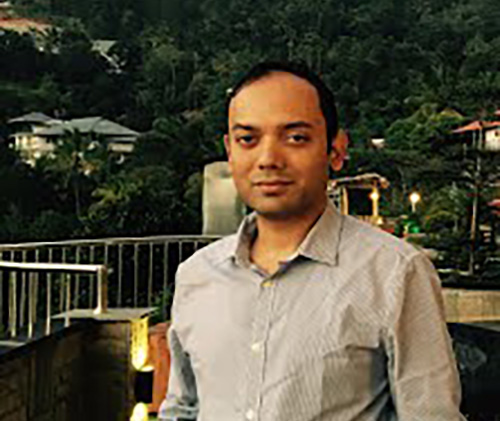
Abstract
Pre-shared entanglement can significantly boost classical optical communication rates in the regime of high thermal noise, and a low-brightness transmitter. In this regime, the ratio between the entanglement-assisted capacity and the Holevo capacity---the maximum reliable-communication rate permitted by quantum mechanics without any pre-shared entanglement as a resource---is known to scale as log(1/N), where N<<1 is the mean transmitted photon number per mode. This is especially promising in enabling a large boost to radio-frequency communications in the weak-transmit-power regime, by exploiting pre-shared optical-frequency entanglement, e.g., distributed by the quantum internet. In this talk, as detailed in this paper (arXiv:2001.03934), we will describe a structured design of a quantum transmitter and receiver that leverages continuous-variable pre-shared entanglement from a downconversion source, which can harness this purported infinite-fold capacity enhancement---a problem that has been open for a long time. Finally, the implication of this result to the breaking of the well-known {\em square-root law} for covert communications, with pre-shared entanglement assistance, will be discussed (details in: arXiv:2002.06733).
Speaker Bio
My background lies at the intersection of information theory and quantum optics. At the high level, my research interests lie in investigating fundamental quantum limits of photonic information processing with applications to optical communications, imaging, sensing and computation. I am interested in investigating structured realizations of optical systems whose performance can approach these fundamental limits. I am also interested in network information and communication theory, and applications of ideas therein to developing scalable realizations of photonic quantum computing and a quantum communication network.
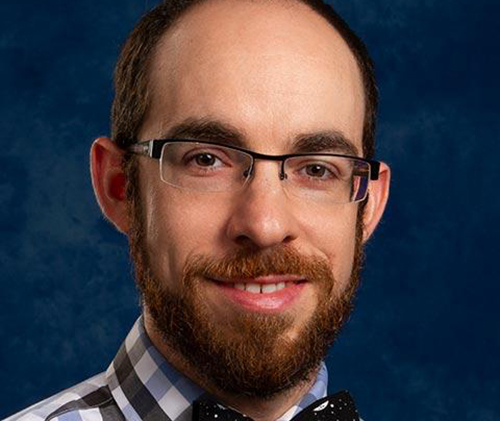
Abstract
We present recent results from work conducted in the RIT Integrated Photonics Group in collaboration with the Air Force Research Laboratory. We will discuss the generation of high-brightness TM-polarized photon pairs which were generated via nonlinearly coupled resonators. This source produces high quality heralded single photons and provides enhanced tunability to compensate for self-phase modulation and dispersion. Additionally, we will present a two-photon interference experiment using a resonant hong-ou-mandel interferometer, which has a compact footprint when compared to standard Mach-Zehnder interferometers. This new design is capable of high visibility. We conclude with some recent results related to low-loss, high-dimensional packaging for entangled photon applications.
Speaker Bio
David Starling is an Associate Professor at Penn State Hazleton. Starling earned his Ph.D. at the University of Rochester. His areas of expertise include experimental quantum optics, quantum measurement and information, and applied physics more information on his research can be found on his research page.

Abstract
Jody Burks (IBM), Shreya Prasanna Kumar (Xanadu), Susan Mniszewski (LANL), Eleanor Rieffel (NASA) and Ying Ju Wang (Cold Quanta) will discuss increasing the outreach efforts for diversity in quantum and creating a community among women in quantum research with moderator Sonia Lopez Alarcon.
Speaker Bio
Moderator: Sonia Lopez Alarcon, Associate Professor, RIT:
Dr. Sonia Lopez Alarcon received a B.S. in Physics and M.S. Electronics in from the University Complutense of Madrid, Spain. In her latest college years she worked at Lucent Technologies, Madrid, and Fundetel at Polytechnic University of Madrid, where she became familiar with the design and fabrication process of integrated circuits. In 2003 she started working toward a Ph.D. degree in Computer Engineering at the University Complutense of Madrid, focusing on cache hierarchy in simultaneous multithreaded architectures. In 2004 she started her cooperative research with Professor David H. Albonesi, at the University of Rochester and, later on, at Cornell University. She graduated in 2009, and she joined the Department of Computer Engineering at the Rochester Institute of Technology in the fall of 2009. Her current research interest is on cache optimization, GPU architecture, and heterogeneous hardware solutions.
Jody Burks, Developer Advocate, IBM:
Jody Burks is the IBM Quantum Academic Partner Technical Lead. She is also a Federated Developer Advocate, Senior Quantum Computing Ambassador and Quantum Technical Ambassador with IBM in Houston, TX. She is a computational biochemist by training, with a PhD in Biochemistry from Auburn University (6 publications). Her PhD research focused on relationships between chemical structure and function in viruses and bacterial noncoding/structural RNAs, and involved bioinformatics coding and data analysis such as biological sequence database maintenance and comparative sequence analysis, and also 3D molecular structure modeling. She taught biostatistics, virology and organic chemistry as an assistant professor for a couple of years, then moved into industrial R&D as a chemist. After generating 9 patent applications (7 issued at present) and three publications she came to IBM where she could use her data science and computational skills in addition to her chemistry training. She delivers workshops and guest lectures on quantum computing, cloud, AI and data science. She also has experience with web application and webpage development with front end stack.
Shreya Prasanna Kumar, Quantum Architectures Researcher, Xanadu:
Shreya holds a Masters in theoretical physics from the Perimeter Institute in Waterloo, and a Ph.D. in quantum physics from the University of Ulm. She specializes on quantum optics, optomechanics and tabletop tests of fundamental physics.
Susan Mniszewski, Staff Member, LANL:
Susan received her B.S. in Computer Science from Illinois Institute of Technology. Susan has a diverse computational background – Other current work includes development of molecular dynamics (MD) proxy applications for next generation computers, exploration of sparse matrix and graph-based linear scaling approaches for quantum molecular dynamics (QMD), and performance simulators for accelerated molecular dynamics (AMD) methods. Past work includes large-scale hydrology modeling, ontology-based clustering and protein similarity matching, wavelet-based distance visualization, infrastructure software for coupling parallel applications, automated data interpretation for analytical chemistry, translating text-to-phonemes using a large-scale default hierarchy learning system, link encryption, and more.
Eleanor Rieffel, Senior Research Scientist Lead, Quantum Artificial Intelligence Laboratory (QuAIL), NASA Ames Research Center:
Eleanor Rieffel received her Ph.D. in mathematics from the University of California, Los Angeles. After a mathematics post-doc at the University of Southern California, she joined FX Palo Alto Laboratory (FXPAL) where she performed research in diverse fields including quantum computation, applied cryptography, image-based geometric reconstruction of 3D scenes, bioinformatics, video surveillance, and automated control code generation for modular robotics. Her book, Quantum Computing: A Gentle Introduction with coauthor Wolfgang Polak was published by MIT press in spring 2011.
Ying Ju Wang, Lead Physicist, ColdQuanta:
Ying-Ju earned her Ph.D. in Physics from CU Boulder and completed postdoctoral research at NIST. She is currently a lead physicist at ColdQuanta with 20 years of experience focusing on neutral atoms-based quantum sensing technology.
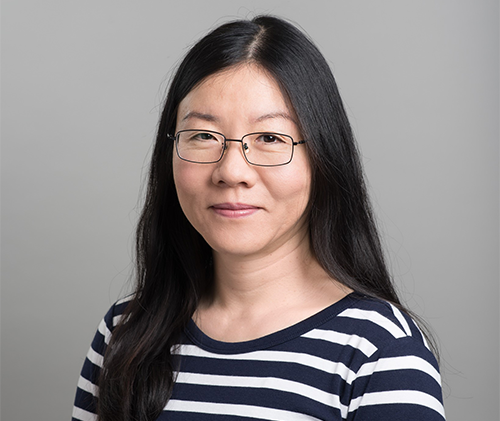
Abstract
Fibre optics is a mature technology that revolutionized telecommunication. Quantum photonics is an emerging technology still under development. The fusion of the two can bring technologically-robust solutions for quantum applications. Here we give one concrete example of a fiber-optic entangled photon source. Free of alignment, fiber coupling or any birefringence compensating schemes, it is arguably world’s simplest polarization-entangled photon source, and perfectly compatible with the vast fibre-optic network infrastructure. Furthermore, using it to form a fibre-based nonlinear interferometer results in the coupling of the spectral domain with the polarization domain, and tunability in both domains. By manipulating the dispersion and birefringence properties of the linear medium in the interferometer, we experimentally demonstrate altering the biphoton spectrum through biphoton interference, as well as tuning the degree of polarization entanglement. Due to the low-birefringence nature of both the nonlinear and linear media in the interferometer, we can preserve the high-quality polarization entanglement while shaping the biphoton spectrum. Additionally, the coupling of the polarization degree of freedom with the spectral degree of freedom, allowing us to tune the degree of entanglement by simply tuning wavelength. Our fibre-based quantum entanglement sources demonstrate a great deal of flexibility in entanglement engineering for future fibre-optic quantum networks.
Speaker Bio
Li Qian is a professor at the Department of Electrical and Computer Engineering, University of Toronto, Canada. Her early research focuses on photonic devices for high-speed optical communications. She was a senior scientist at Corning, Inc., where she led the development of the first commercial extended L-band erbium-doped fiber amplifiers, which is still considered state-of-the-art today. After joining the faculty at the University of Toronto, she started experimental research in fiber-based quantum cryptosystems in 2005. She and her collaborators have demonstrated the world’s first decoy-state quantum key distribution (QKD) system, as well as conducted pioneering research in quantum random number generation, measurement-device-independent QKD and twin-field QKD systems. She is also well-known for developing fiber-based entangled photon pair sources based on periodically poled silica fibres. This technology is now commercialized by OZ Optics. The broadband nature of this source enabled the demonstration of a reconfigurable multi-user entanglement-based QKD network. She is now working towards hyper-entangled photon source with tunable properties in multiple degrees of freedom, providing a versatile quantum photonic source and a useful tool for future quantum networks.
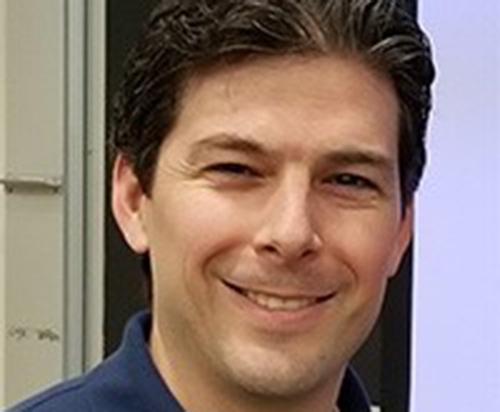
Abstract
We present a robust, low-loss packaging technique of permanent optical edge coupling for quantum applications between a single/multiple fibers and a chip using fusion splicing that is low-cost and scalable for high-volume manufacturing. We fuse the fiber array to the chip via a CO2 laser and reinforce it with an optical adhesive. We demonstrate a minimum loss of 1.0 dB per facet with 0.6 dB penalty over a 160 nm bandwidth from 1480 to 1640 nm for single fiber. We measure a minimum loss of 2.5dB per facet with a variation of +/-0.1dB across a 4-fiber array.
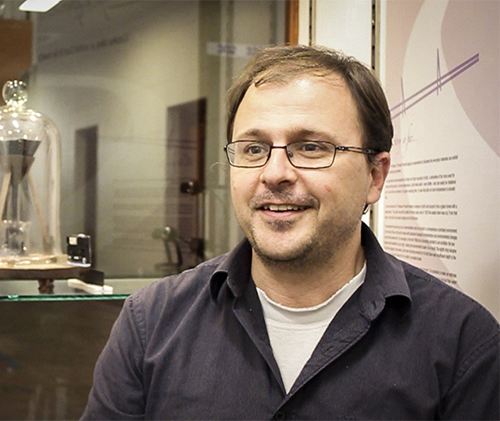
Abstract
Transition-edge sensors (TES’s) are extremely sensitive calorimeters able to measure energies of the order of a few electronvolts. They are now well-known in the quantum technology community because of their superb combination of high-efficiency— higher than 95% for photons in the near infrared range [1]—essentially zero dark counts, and photon-number resolution. One of the main challenges when working with TES’s is to extract the photon-number information from the continuous output signal of the detectors. The usual procedure is to accumulate signals over some time—typically ~2 GB per minuite—and then use post-processing techniques to obtain photon-number resolution from the recorded signals [2]
Here we introduce an FPGA circuit that analyses TES signals in real-time—recording only specific characteristics such as signal area, height, and length—allowing near realtime photon-number resolution and reducing the memory requirements by orders-of-magnitude. Using this new capability, we are able to optimize the number-resolution of the detector to the range we are interested in for each new experiment. In a preliminary study, we calibrated the TES with a weakly-pulsed 820 nm diode laser, and using just the area data from the FPGA were able to discriminate up to 15 photons. We are able to accurately discriminate an n=2 photon Fock state with parts-per-billion precision, dropping to parts-per-hundred precision at n=15 [3].
It is well known that there are physical limits to the precision with which an image can be formed. There are ways in which this limit can be circumvented, for example using super-resolution techniques that exploit the physical structure of the object, or object illumination with entangled states of light. However, in many applications—for example when the object is very far away—we cannot directly interact with the object, or illuminate it with entangled light: the quantum state of the light field is all that is accessible to the observer. Given a finite size imaging system in the far field—i.e., systems with a finite effective numerical aperture—we show the best way to extract the spatial characteristics of the light source.
We implement a general imaging method by measuring the complex degree of coherence using linear optics and our photon-number-resolving detectors. In the absence of collective or entanglement-assisted measurements, our method is optimal over a large range of practically relevant values of the complex degree of coherence [4]. We measure the size and position of a small distant source of pseudo-thermal light, and show that our method outperforms the traditional imaging method by an order of magnitude in precision. Additionally, we show that a lack of photon-number resolution in the detectors has only a modest detrimental effect on measurement precision, further highlighting the practicality of this method as a way to gain significant imaging improvements in a wide range of imaging applications.
References
[1] A. E. Lita, A. J. Miller, and S. W. Nam, Optics Express 16, 3032 (2008).
[2] G. Brida, et al., New Journal of Physics 14, 085001, (2012).
[3] L. Assis, et al., preprint (2020)
[4] L. A. Howard, et al., Physical Review Letters 123, 143604 (2019).
Speaker Bio
Professor Andrew White's research interests are in the field of quantum information, quantum optics, and all aspects of quantum weirdness. More details are included on the Quantum Laboratory website.
Prof. Andrew White was raised in a Queensland dairy town, before heading south to the big smoke of Brisbane to study chemistry, maths, physics and, during the World Expo, the effects of alcohol on uni students from around the world. Deciding he wanted to know what the cold felt like, he first moved to Canberra, then Germany—completing his PhD in quantum physics—before moving on to Los Alamos National Labs in New Mexico where he quickly discovered that there is more than enough snow to hide a cactus, but not nearly enough to prevent amusing your friends when you sit down. Over the years he has conducted research on various topics including shrimp eyes, nuclear physics, optical vortices, and quantum computers. He likes quantum weirdness for its own sake, but his current research aims to explore and exploit the full range of quantum behaviours—notably entanglement—with an eye to engineering new technologies and scientific applications.
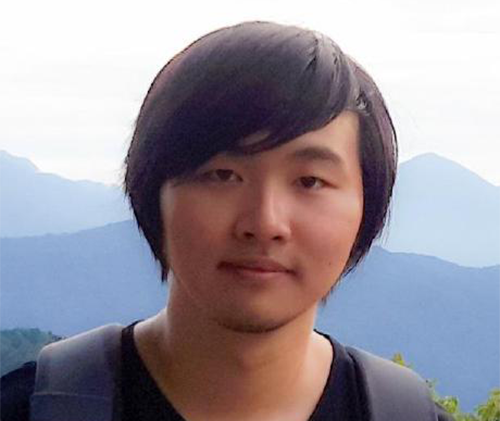
Abstract
Photons generally weakly interact with each other. While this feature is often useful, for instance, in communication, controllably inducing strong photon-photon interactions is necessary for deterministic, all-optical quantum information processing. Consequently, the weak nonlinearity in optics has historically motivated the use of measurement-based feedback schemes for photonic quantum information processing. Here, we theoretically investigate if coherent photonic quantum information processing could be realized by enhancing weak nonlinearities via Gaussian operations. We find that a Kerr medium with weak material nonlinearity can be engineered to implement a coherent cubic phase gate. Recent progress in developing photonic platforms supporting strong spatial and temporal confinement of pulsed light in low loss and low dispersion nonlinear waveguides could enable an experimental demonstration in the near future.
Speaker Bio
Tatsuhiro is a post-doctoral research scientist with NTT Research’s PHI Laboratory, and Cornell University, where he works in the laboratory of Peter McMahon. He received his BASc in Engineering Science from the University of Toronto in 2014, and his PhD in Applied Physics, under the supervision of Hideo Mabuchi, from Stanford University in 2019. His research interests include nonlinear and quantum optics, quantum information, and their intersection with machine learning.
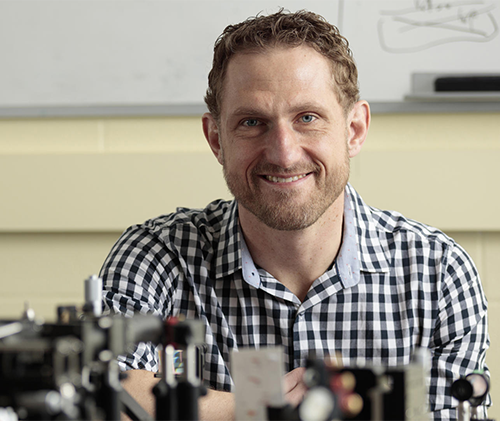
Abstract
Quantum photonic devices are emerging from the lab toward real-world applications at an ever increasing pace. The applications range from the secure transfer of information for banking and communication, to quantum radar for national defense, assistance in search and rescue missions, to biomedical applications such as in dose monitoring for cancer treatment as well as in non-invasive imaging of the eye, to diagnose potentially blinding diseases. In these applications, new types of quantum photonic hardware are required including the cutting edge generation of entangled photon pairs and light detection at the single-photon level. In addition to these new types of quantum photonic hardware, manipulation of single photons on a chip is required for photonic quantum computing.
In my talk I will discuss how we generate entangled photon pairs with semiconductor quantum dots in shaped nanowire waveguides [1, 2]. I will present our recent work towards engineering these sources to reach perfect entanglement with near-unity efficiency [3, 4, 5]. Currently this is a feat not attainable with leading photon technologies based on parametric down-conversion due to the probabilistic nature of the generation process and self-assembled quantum dots due to dephasing processes and/or poor collection efficiency. I will also present how these quantum light sources can be integrated within a quantum photonic circuit on a silicon chip to route and filter single photons [6, 7].
Further to this, I will present our newest and most exciting work. We have developed a new type of quantum sensor that detects light over an unprecedented wavelength range, from the UV to near-infrared with high speed and timing resolution [8]. Lastly, I will illuminate how our nanostructure is uniquely shaped to achieve near-unity efficiency over the entire wavelength range, and show how we can extend the wavelength detection range to the infrared and beyond in the future, to continue changing the future of quantum photonic devices from the lab to the real world.
[1] M.A.M. Versteegh et al., Observation of strongly entangled photon pairs from a nanowire quantum dot, Nature Commun. 5, 5298 (2014).
[2] K.D. Jöns et al., Bright nanoscale source of deterministic entangled photon pairs violating Bell’s inequality, Scientific Reports 7, 1700 (2017).
[3] A. Fognini et al., Dephasing free photon entanglement with a quantum dot, ACS Photonics 6 (7), 1656-1663 (2019).
[4] A. Fognini et al., Universal fine-structure eraser for quantum dots, Optics Express 26 (19), 24487-22496 (2018).
[5] M. Zeeshan et al., Proposed scheme to generate bright entangled photon pairs by application of a quadrupole field to a single quantum dot, Phys. Rev. Lett. 122, 227401 (2019).
[6] I.E. Zadeh et al., Deterministic integration of single photon sources in silicon based photonic circuits, Nano Lett. 16 (4), 2289-2294 (2016).
[7] A. Elshaari et al., On-chip single photon filtering and multiplexing in hybrid quantum photonic circuits, Nature Commun. 8, 379 (2017).
[8] S. Gibson et al., Nature Nanotechnology 14 (5), 473 (2019).
Speaker Bio
Dr. Reimer joined the Institute for Quantum Computing (IQC) in 2015 and is an Assistant Professor in the Electrical and Computer Engineering department at the University of Waterloo. Previous to this he received his BSc in Honours Physics at the University of Waterloo, earned his MSc in Engineering Physics at the Technical University of Munich in Germany, obtained his PhD in Physics at the University of Ottawa/National Research Council of Canada, and spent 5 years at the Delft University of Technology in the quantum optics lab of Professor Val Zwiller where he developed solid-state quantum photonic devices, and two years in industry at JDS Uniphase as an R&D Engineer.
Dr. Reimer’s research focuses on the development of quantum photonic devices based on semiconductor nanowires, which are needed to advance quantum information science and technologies to degrees yet unseen, as well as to test fundamental questions in quantum photonics.
Notably, Dr. Reimer has made a huge impact in the development of bright single photon and entangled photon sources based on semiconductor quantum dots in shaped nanowire waveguides, as well as nanowire-based single electron devices and efficient nanowire avalanche photodiodes for single-photon detection. Due to his impact in the field, he was recognized by the Ministry of Research and Innovation in 2016 when they awarded him the Early Researcher Award. He is also an integral part of a recent start-up company, Single Quantum Systems, developing highly efficient single-photon detectors based on semiconductor nanowires and quantum LIDAR for ranging and 3D imaging.
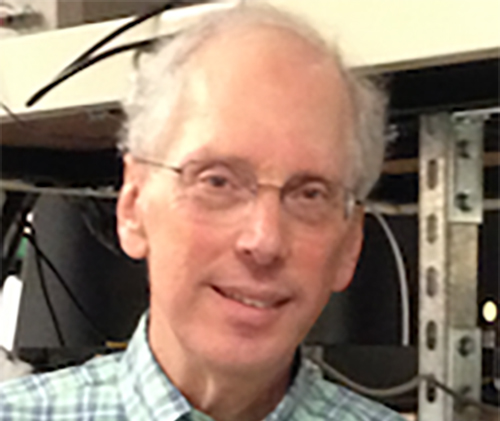
Abstract
Quantum Radar! Check out what Wikipedia says about it: it might render stealth aircraft obsolete. Watch YouTube videos that purport to explain all about it. Read press reports in which China claims it field tested one in 2016. But is there any fire underneath all that smoke? This talk will answer that question by telling the story of “quantum illumination”, from its beginnings through recent theoretical and experimental results.
Quantum illumination is the only quantum radar concept that has been proven, theoretically, to outperform all classical radars of the same transmitted energy in detecting a weakly-reflecting target that is embedded in strong background noise. It uses a source of quadrature-entangled signal and idler beams to gain its target-detection performance improvement despite loss and noise that destroys the entanglement. A realistic assessment of that improvement's utility, however, shows that its value is severely limited. Nevertheless, the fact that entanglement can be of value on an entanglement-breaking channel — the meta-lesson of the quantum illumination story — should spur continued research on quantum radar.
Speaker Bio
Jeffrey H. Shapiro is the Julius A. Stratton Professor of Electrical Engineering at the Massachusetts Institute of Technology. He has more than 40 years of research experience in quantum optical communication and sensing, and he has published seminal articles on the generation, detection, and applications of squeezed-state light beams, on quantum and classical ghost imaging, and on quantum illumination. Prof. Shapiro is a Fellow of the American Physical Society, the Institute of Electrical and Electronics Engineers, the Institute of Physics, the Optical Society, and SPIE.
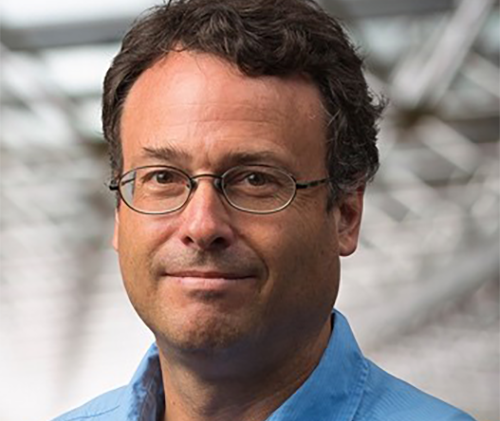
Abstract
Quantum information processing and quantum communication are novel protocols that originate from the very fundamental and philosophical questions on superposition and entanglement raised since the early days of quantum mechanics. Strikingly, these new protocols offer capabilities beyond communication task possible with classical physics. One very important example is the secure key exchange based on the transmission of individual quantum signals between communication partners. The big vision and frontier in the field of quantum communication research is the development of a Quantum Internet, which establishes entanglement between many different users and devices. Extending today’s internet, the Quantum Internet will readily transfer quantum bits, rather than classical bits, between users near and far and over multiple different channels and could be used for secure communications, quantum computer networks and metrological applications. I will discuss recent advances on implementations and tools useful for generating and distributing photonic quantum entanglement over robust channels including. Time-bin encoding and reference-frame-free protocols. I will also present an overview of the upcoming Canadian quantum communication satellite QEYSSAT.
Speaker Bio
Prof. Thomas Jennewein is a faculty member in the Department of Physics and Astronomy, and the Institute for Quantum Computing at the University of Waterloo since 2009. His research is focused on experimental implementations of quantum photonics and quantum optics, foundational questions and experiments of quantum entanglement and quantum science, and in particular, performing quantum communications between ground and space. He is the Principal Investigator for the Canadian QEYSSAT mission proposal.
Dr. Jennewein completed his PhD in 2002 at the University of Vienna, on quantum communication and teleportation experiments with entangled photons, after which he spent one year in automotive industry. From 2004 – 2009 Jennewein was a Senior Scientist at the Vienna Institute for Quantum Optics and Quantum Information (IQOQI), with a half-year ARC international fellowship at the University of Queensland. In 2009 he took his position at Waterloo.
August
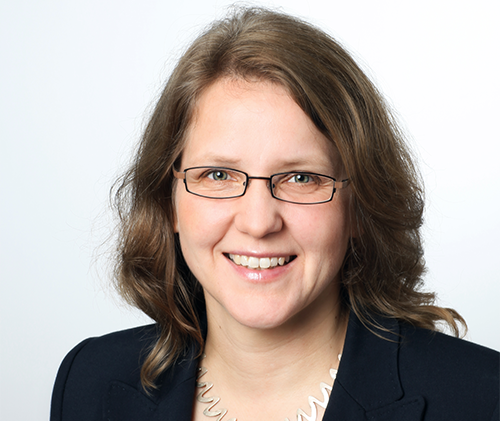
Abstract
Recent achievements in the area of integrated quantum optics and quantum information processing have shown impressive progress for the implementation of linear circuits based on monolithic waveguide structures. Most experiments are based on χ(3) -media, such as glas, silicon-on insulator or silica-on-silicon. In these platforms the implementation of highly efficient sources, frequency converters and fast active phase shifters and modulators pose severe challenges. The use of advanced waveguides structures, which harness a χ(2) –non-linearity, allows for the realization various devices with multiple functionalities. These include single- and multi-channel sources with high brightness, quantum frequency conversion with tailored spectral-temporal properties, and circuits comprising degenerate pair generation in orthogonal polarization, linear elements, and active elements such as polarization rotators or an electro-optically controllable time delay. Here we present our latest progress for the implementation of integrated devices based on χ(2) –media for quantum circuits and quantum communication systems.
Speaker Bio
Christine Silberhorn is a professor at Paderborn University, where she is leading a research group in the area of integrated quantum optics. Her interests cover novel optical technologies based on non-linear integrated devices including their fabrication and tailoring for new applications, and the exploration of ultrafast pulsed light as well as of time multiplexed quantum networks. She has contributed to the development of engineered quantum light sources and circuits using integrated optics and ultrafast pulsed lasers, the implementation of multichannel quantum networks for photon counting and quantum simulations, and the realization of quantum communication systems with bright light. She received her doctorate from the University of Erlangen in 2003, and worked as a postdoc at the University of Oxford from 2003 to 2004. From 2005 to 2010 she was a Max Planck Research Group Leader in Erlangen. Her research work has been awarded by several prizes; most prominently she received the Gottfried Wilhelm Leibniz-prize from the German Science Foundation in 2011 and a consolidator ERC-grant in 2017. In 2013 she has been elected as a member of the Leopoldina, National Academy of Science, in 2018 as a Fellow of the Optical Society of America and in 2020 as a member of the North Rhine-Westphalian Academy of Sciences, Humanities and the Arts. In 2019 she became a fellow of the Max Planck School of Photonics.
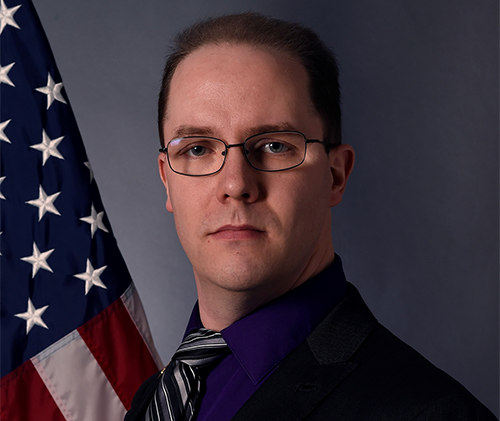
Abstract
In this talk we will discuss how entanglement is defined with respect to separability, and how the strategies for quantifying two-party entanglement can be extended to multiple parties. Though residual entanglement (i.e., what is left when two-party entanglement is subtracted away) is a popular concept for measuring three-party entanglement, we criticize this and expand on a new resource-based measure known as the tri-partite entanglement of formation. Though there remain multiple fundamental questions to be answered on measures of multi-partite entanglement, we show how the tri-partite entanglement of formation can be bounded from below using experimental correlations in much the same way as was done for two parties. Moreover, we give examples showing how much tripartite entanglement may be present in entangled photon triplets generated in nonlinear optics, and provide a general witness for N-partite entanglement. In our development of the N-partite witness, we also discovered something interesting about the nature of quantum correlations. Though there is no quantum-imposed limit to the correlations two parties can share (e.g., in both position and in momentum), there is such a limit for three or more parties.
Speaker Bio
James Schneeloch received his Ph.D. from the University of Rochester in 2015. He currently works with Dr. Paul Alsing's quantum information research group in the Information Directorate at the Air Force Research Laboratory. His research focuses on characterizing quantum resources (e.g., entanglement) in high-dimensional quantum systems, and on experimental and theoretical quantum optics.
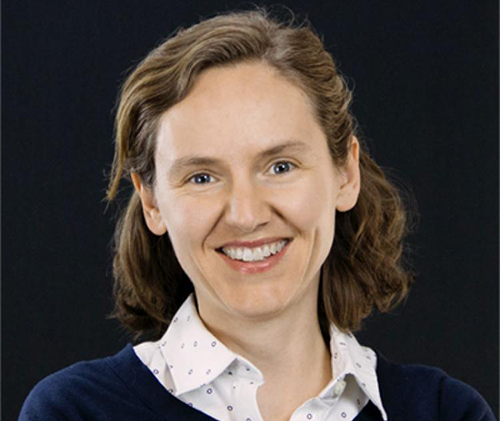
Abstract
I will present an overview of the newly-created NSF Quantum Leap Challenge Institute for enhanced sensing and distribution using correlated quantum states. Under the leadership of director Jun Ye, our multi-institutional center will collaborate to explore how advanced quantum sensing can discover new fundamental physics, develop and apply novel quantum technologies, provide tools for a national infrastructure in quantum sensing, and train a quantum savvy workforce.
Speaker Bio
Cindy Regal is an Associate Professor of Physics at the University of Colorado and a JILA Fellow. Her research focuses on quantum optomechanics and neutral atom quantum bits. She is currently the Associate Director of Science for the University of Colorado CUBit quantum initiative, and the deputy for science and research convergence in the Q-SEnSE national quantum sensing NSF Quantum Leap Challenge Institute.
Confirmed Speakers
- Carmen G. Almudever, TU Delft
- Karl Berggren, MIT
- Judy Burks, IBM
- Jacques Carolan, MIT
- Jennifer Choy, University of Wisconsin
- Lukas Chrostowski, University of British Columbia
- Dominique Dagenais, NSF
- Dirk Englund, MIT
- Eric Fossum, Dartmouth
- Michael Fox, University of Colorado Boulder
- Gregory Fuchs, Cornell University
- Saikat Guha, University of Arizona
- Amr Helmy, University of Toronto
- Thomas Jennewein, University of Waterloo
- Shreya Prasanna Kumar, Xanadu
- Ray LaPierre, McMaster University
- Dylan Mahler, Xanadu
- Hamed Majedi, University of Waterloo
- Nicolas Menicucci, RMIT University
- Susan Mniszewski, LANL
- Tatsuhiro Onodera, NTT Research & Cornell U.
- Miles Padgett, University of Glasgow
- Li Qian, University of Toronto
- Cindy Regal, University of Colorado
- Michael Reimer, University of Waterloo
- Eleanor Rieffel, NASA Ames Research Center
- Babak Saif, NASA
- James Schneeloch, Air Force Research Laboratory
- Jeffrey Shapiro, MIT
- Christine Silberhorn, Paderborn University
- David Starling, Penn State Hazleton
- Jelena Vuckovic, Stanford
- Ying Ju Wang, ColdQuanta
- Andrew Weiner, Purdue
- Andrew White, University of Queensland
- Carl Williams, NIST
Corporate Sponsorship
Please contact Robyn Rosechandler for more information on sponsorship levels.
